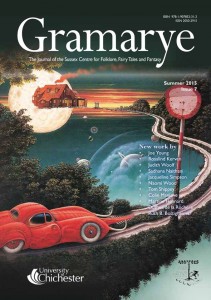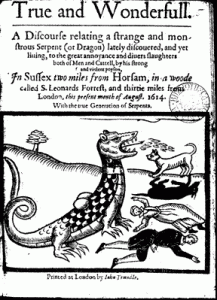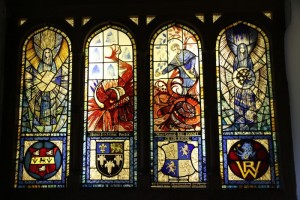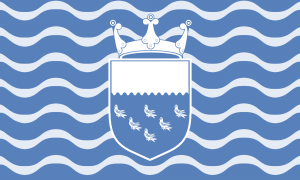 On Tuesday 16th June, I had the pleasure of attending a talk organised by the Sussex Centre for Folklore, Fairy Tales and Fantasy as part of the 2015 Festival of Chichester.
On Tuesday 16th June, I had the pleasure of attending a talk organised by the Sussex Centre for Folklore, Fairy Tales and Fantasy as part of the 2015 Festival of Chichester.
It was given by their visiting professor of folklore, Jacqueline Simpson. If you have had anything to do with British folklore, or indeed the folklore of Terry Pratchett’s Discworld, you probably know her name…
It was Sussex Day too , apparently – an entirely suitable time for SCFFF to launch their interactive map of Folklore in Sussex and the South Downs. It has over a hundred stories in more than a dozen categories to explore – and there are walks for many places. My friend and colleague Carole Richmond informs me there will also be bus routes in later versions. PLEA If you have any tales not in this early prototype, please let SCFFF know before the Grand Official Launch Event* in October. * my phrase
First of all, I will attempt to separate the three elements involved in SCFFF – all of which fascinate me:
- Folklore – this includes a wealth of material passed between ordinary people, but for the purposes of the talk and the map, I’ ll look at legends. These stories usually explain how a place got its name – or how it came to be. Tales such as how the bell came to be in Bell Hole near Bosham and the story of Gill’s Grave on Mount Caburn near Lewes. They are rooted in a specific location – which as in all stories, makes them more believable.
- Fairy tales – these don’t usually have a particular place where they happened. You couldn’t write a guidebook to them, I think. They get passed around the world.
- Fantasy – where writers have used elements of either or both – which is where I get excited.
I’ve loved legends and ghost stories and the like from being very small. I must admit when I learned that many folk tales are the same in different places, I was terribly disappointed and almost cross. I so wanted them to be true. Still…
Fairy tales do not tell children the dragons exist. Children already know that dragons exist. Fairy tales tell children the dragons can be killed.
G.K. Chesterton
 I am older and perhaps a little wiser now. There were still many things that delighted me in the talk – here are just three:
I am older and perhaps a little wiser now. There were still many things that delighted me in the talk – here are just three:
- Charlotte Latham, a rector’s wife in Fittleworth who once allowed a Sunday School class to ‘quite overwhelm’ her with ‘a torrent of narrative’ about their relatives’ encounters with ghosts and the Devil. She wrote an article entitled ‘Some West Sussex Superstitions Lingering in 1868’ [By the way, ‘superstition’ then didn’t have quite the pejorative tone it has now.] I would love to have been there!
- The Professor’s splendid disdain for snooty researchers who patronised working people. Of course, the ordinary folk knew Pharisees were not fairies. I also liked her explanation of how tales go ‘horizontally’ – from friend to friend.
- That the story behind the Knucker Hole of Lyminster has become a dance for Mythago [a Morris team] – and is the subject of a stained glass window in the local church, St. Mary Magdalene.
 Sometimes people wonder where I get my ideas from. With the wealth of stories in just Sussex, let alone the whole of the British Isles, there are more sources than any of us could exhaust. You don’t have to be into full-on fantasy – there’s plenty for those writing comedy too. Or if you’re Terry Pratchett, both.
Sometimes people wonder where I get my ideas from. With the wealth of stories in just Sussex, let alone the whole of the British Isles, there are more sources than any of us could exhaust. You don’t have to be into full-on fantasy – there’s plenty for those writing comedy too. Or if you’re Terry Pratchett, both.
Jacqueline Simpson’s updated Folklore of Sussex can be bought from The History Press


Pingback: Ten-Minute Blog Break – 23rd June | Words & Pictures